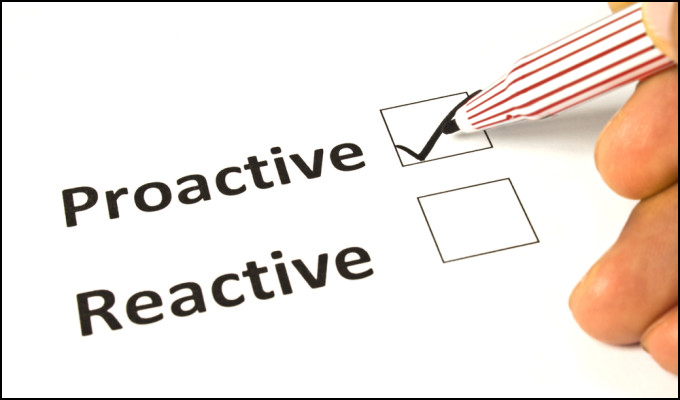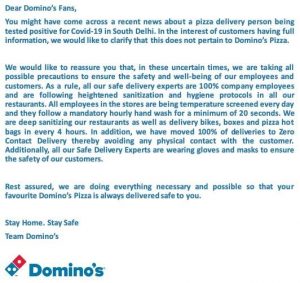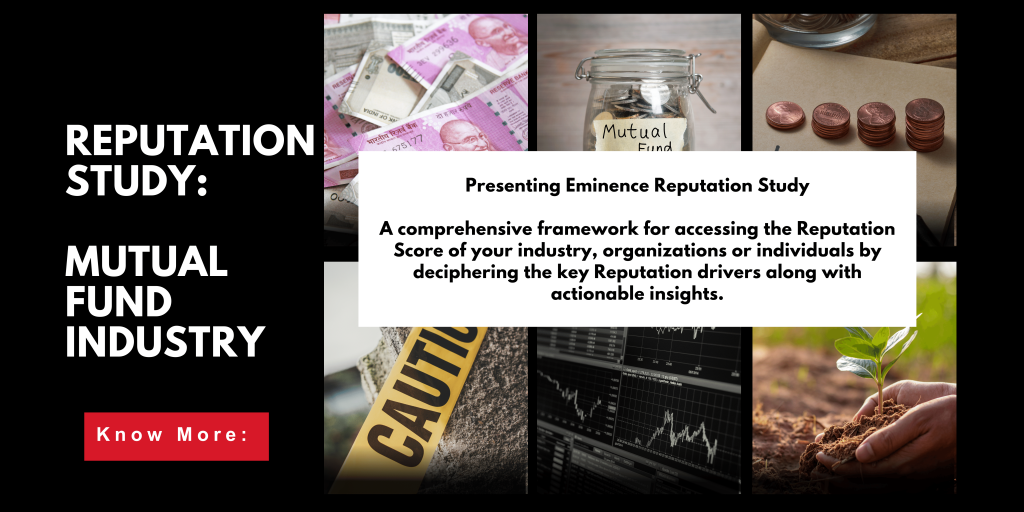
Recently, on my internal team group, one of my colleagues shared a news update about a pizza delivery boy in Delhi testing positive with the COVID19 virus.
This initiated intense discussions which fueled already heightened concerns and apprehensions around the pandemic. However, within a few hours, the same colleague shared an update from Domino’s Pizza, clarifying that the concerned delivery boy was not its employee. In the post that Domino’s had put up on social media, it also went on to give details of its various health and sanitation measures. This settled some of our concerns.

Coincidentally, a friend who lives in the same location tweeted about the news and was worried which outlet it could be. I immediately shared the statement that Domino’s had issued. He responded saying, “I am glad it is not Domino’s. Then must be Pizza Hut or Mojo Pizza.” This immediately got me thinking. Domino’s pro-activeness worked. That’s a big lesson as a communicator – In uncertain times like this where every piece of information is over analysed and the world around is full of doubts, it is important to proactively quench any possibility of negative news about your brand.
Further, around the same time Box8, which is the parent company of Mojo Pizza, also issued a statement accepting that the delivery boy mentioned in the news was its team member. It then went on reassuring that the company has swiftly moved into action towards sanitisation, quarantine and other precautionary measures. Without getting into the nuances of quality of messages covered, I believe BOX8’s approach to come forth and accept the responsibility is notable. This positions the company as responsive and trustworthy. In times like this while all of us are overly apprehensive but at the same time we are more understanding and supportive too. That’s another important lesson – Your quick and responsive approach towards negative news with respect to your company enhances the trust quotient especially in testing times.
We need to also note that BOX8 is still establishing its feet and has not reached anywhere close to the giant brands like Nestle or HUL in terms of size, recall or reputation. It takes a lot of courage to be so forthcoming and that too when as a relatively small player you have more to lose. In fact, the way Nestle handled the Maggi crisis and chose to adopt wait and watch approach, it has gone down in history as the most famous case study of poor crisis management.
So, does this mean that companies have to keep issuing anticipatory statements at every negative instance? Not necessarily. There are cases where adopting a wait and watch approach has worked. Like it did when the Marriott Hotel adopted stay quiet approach to the #TheRahulBoseMoment crisis. Parallelly, sometimes enthusiastically clarifying stance may even get the company unrequired attention snowballing into a crisis-like situation. Hence, it is important for the companies to anticipate the outcome of an unpleasant episode and then act accordingly. Having a well thought through crisis communication plan ready is thus is highly recommended. However, when ambiguity and anxiety are widely prevalent in the ecosystem, then I believe a forthcoming and proactive approach to communication is the most preferred way.











